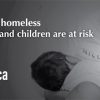
KJIPUKTUK (Halifax) – I know racial prejudice persists in our time. I encounter racism often. Yet, it still shakes me. It catches me by surprise, particularly when it comes from spaces least expected; although, in my head I know, racism is not confined to specific places or particular contexts. Racism manifests itself in every sphere of daily life: in playgrounds, in schools, workplaces, hospitals, the courts, at professional conferences, and other sites of human activity. To survive it, I try to start every day anew. I read about it to understand its dynamics, and sometimes I write about it and share my experiences.
In my experience, racism in Canada is expressed more subtly than what I have experienced in Guatemala, the country where I was born. Here, for instance, im/migrant and racialized women are more likely to be politely not granted a job, not allowed to climb the employment ladder (1). They are more likely to be politely excluded from social activities. In sum, they are often excluded from Canada’s social, economic, and political life.
Given this context, it is understandable why I was so taken aback to hear someone use the term “savage”, so nonchalantly, as an unchecked part of her cultural vocabulary a few weeks ago at the Canadian Association of Midwives (CAM) conference held here in Halifax.
I was there to meet a former professor and to buy some books on mothering. I am passionate about exploring what I have termed cross cultural mothering and deconstructing motherhood.
As I walked through a hallway to find my former professor, I passed by a coffee table that was being set up for the afternoon break. There were two conference participants helping themselves to refreshments. I was a step away from them, when one of them turned around to the person setting up and jovially apologized to the hotel employee for not waiting until the break to get their refreshments. She “justified” their actions because: “we are savages”.
I was paralysed. For a second, I debated whether to forget about this colonial encounter and keep walking. But my body was quicker, turning ninety degrees to face the coffee table and in taking one step to the coffee maker. For a second, I debated whether I should call her on her choice of word, but before I could get a word out, the “unaware” aggressor was “long” gone.
I had been silenced by this racist onslaught and afraid to say anything. As I often do in similar circumstances, I drew courage from my inner feminist killjoy (a term I borrow from the British- Australian feminist Sara Ahmed) and said: “I am always surprised by how some people use terms like ‘savage’…”. I don’t recall if I finished the sentence, but the conference participant agreed that the term is often used without considering its origins. I felt validated. Sadly, I do not recall her name to honor her here, but we did introduce each other and then departed ways. I left a wounded self-advocate.
Back at my desk, I could not concentrate, so I began writing this article. Four hours later, I left an unfinished article and took the evening off. My husband and I watched an entertaining show and went to bed. As I put my head on the pillow, I was overcome with emotion by the persistent colonial gaze: the interpellation of indigenous, Black, brown racialized subjects as “unruly” and “wild” who need to be tamed and made “civil” through religious indoctrination, institutions like residential schools; the over-policing, surveillance, and control of their bodies (particularly those of women through sterilization practices) and communities; the dismissal or double standard concerning acceptance of traditional Indigenous ecological knowledge by Western science, etc. In short, I was overcome by that narrative that would influence violent expansion across the Americas and continues to affect Indigenous lives to this day, including our socio-psychic space.
Historical documents tell the narrative of the colonial construct of a “civilized” subject and the “savage” “other” to back imperial conquest. While it has long been acknowledged that race is a social construction; race continues to operate as a principal identity at local and national levels. And the impact of racism is felt at a personal level, on local communities, nation-states and the global system.
Recently, while we as Canadians are on the road of reconciliation with First Nations, among other things, by implementing the TRC’s call to action, we are also witnessing the new rise of white supremacy. This deeply concerns many of us, but the fact is that racism maintains its continuities with its past every day.
For instance, images of the “Other”, that “strange”, “exotic”, “incomprehensible ‘savage’ creature”, often feared, abhorred while in some ways also envied, admired and desired, have run as a constant racist thread through the European past. Often unconsciously, these images continue to be invoked in the present in mundane affairs.
My emotional response to such a punch line is not merely an issue about my individual, personal sensitivities. It is the effect of inhabiting the social and psychic landscapes of Europe’s “Others”. What she said felt real and became part of my reality, precisely because she reiterated a colonial stereotype: an inferiorised collective subject through the word “savage”.
As Canadians, we have the choice to call people on their racist behaviour and unconscious biases. Or like co-anchor Rob McLean did, we can choose to nod along someone like Don Cherry uttering xenophobic or racist sentiments.
Writing this article is a response to such enunciation. It is a response to the TRC call to action (45.i) to repudiate concepts used to justify European sovereignty over Indigenous lands and people and, I add, our dehumanization.
(1) – Yax-Fraser, Maria Jose and Lori Root (2016) Gender Based Analysis Plus Needs Assessment: Moving Up Underemployment of Professional Immigrant Women.
Note: With a special thanks to Fazeela Jiwa and Judith Meyrick for providing comments on a draft of this article. The title of this article is the result of Fazeela’s suggestions.
See also: Countering white disbelief with historical knowledge: Racism and racial profiling in Nova Scotia
With a special thanks to our generous donors who make publication of the Nova Scotia Advocate possible.
Subscribe to the Nova Scotia Advocate weekly digest and never miss an article again. It’s free!



